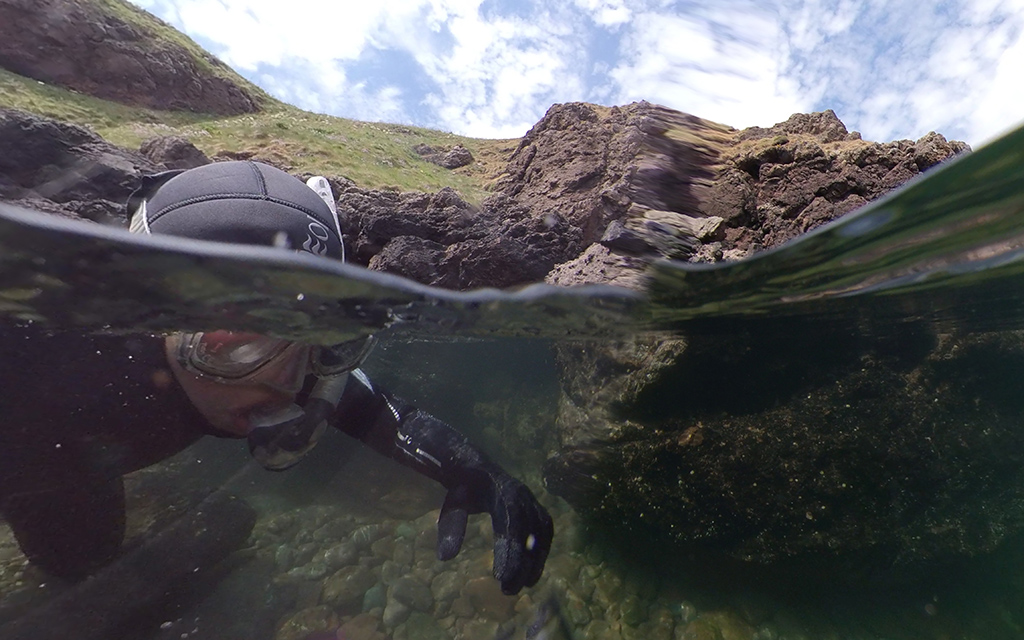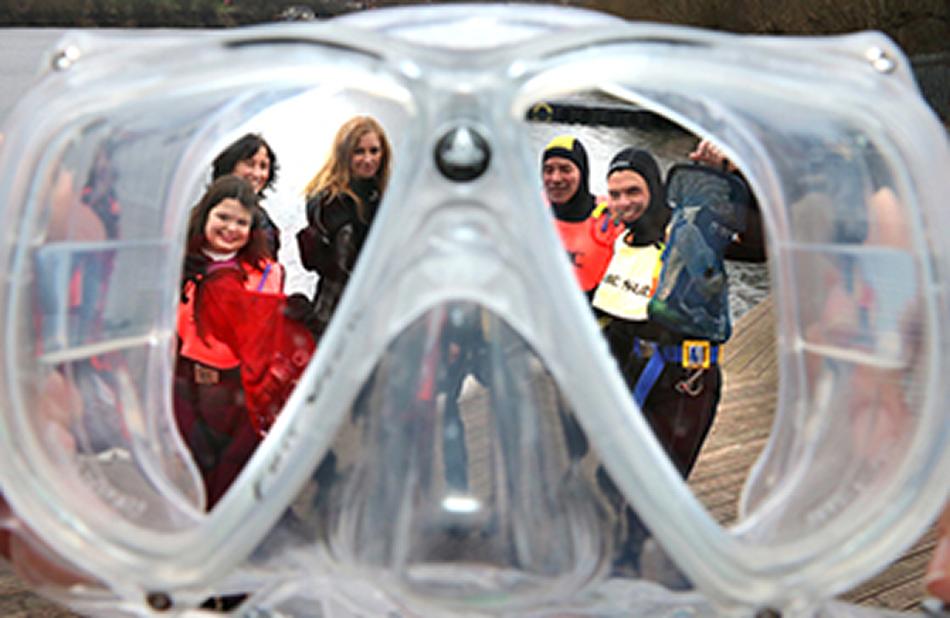
Snorkelling into a sea cave is a great adventure, but what are the safety considerations? Andy Torbet has some advice.
Before anyone gets too excited, this is not a piece encouraging folk to head snorkelling into a true overhead environment. Cave snorkelling is a specialty we will not be undertaking! Instead, let’s bear in mind that the vast majority of sea caves are only semi-submerged subterranean systems... the obvious example is Fingal’s Cave in Staffa, which has been visited by thousands of snorkellers over the years. There are many other rock arches and caves where snorkellers can enter and explore in safety. Since sea caves need cliffs to exist, they may only be accessible from a boat or after a significant swim from a safe shore entry point. If your method of entry is the latter, then make sure your plan considers the tide so you can ensure you can get to your exit point.
Another consideration is the swell. Most sea caves will narrow the further in you go. This means waves will increase in height and power, so it may still be rough inside when it appears calmer outside. Fortunately, the thickness of neoprene we tend to wear in the UK provides some impact protection against the odd bump, but we still need to plan carefully.
The final point to make is that it’s dark! The degree to which sunlight can penetrate depends on the size of the topside opening, its orientation towards the sun and how deep it goes. If you want to appreciate the true spectacle, and to stay safe, bring a torch.
It’s exciting to explore somewhere a bit different, perhaps a part of a well-known shoreline that you’ve never considered looking at closely.
Cave water tends to harbour less life than reefs and kelp beds, due to the disruptive forces at work, and of course the lack of light. Light and viz may both deteriorate the further you penetrate, so you’ll find yourself making more use of the aforementioned torch to look at the formations around and above you. And do look up – sometimes the best way to experience a sea cave is on your back. And when you reach the end of the cave, you should remember to look back at the opening. That classic view towards the light of the horizon is one few people will ever get to see.
Some sea caves lead to pebble or sandy beaches at the back. These hidden coves are seldom visited and are rare gems. However, you also tend to find that natural detritus accumulates at the back of some caves. Among the storm-torn stalks of kelp will inevitably be plastic bottles and polystyrene cups. Not always, but it’s a fact we divers are all too aware of our seas not being the pristine waters we would love to enjoy.
Even so, the smell you experience at the back of these chambers may not entirely be due to rotting seaweed. Sea caves are often inhabited by seals, mainly grey seals. They especially seem to like resting on the tiny shores at the back of the caves, safe and hidden away. The larger the underground beach, the more you may encounter. Obviously, the trick is to keep your distance and avoid panicking the pinnipeds; leave them to their rest.
I don’t encourage the disturbance of any wildlife but since only a very small percentage of sea caves will actually harbour a seal, I think it’s best to proceed with caution rather than never go there at all. If you do chance upon a seal in the darkness, allow it plenty of room to get past you, as it will almost certainly want to escape. We all dive to see a different world and the niches that are sea caves are an extension of this. It makes our playground that much bigger and lends a new perspective to our experience of the sea.
Learn more on snorkelling with BSAC.
Become a snorkel instructor.
Teaching snorkelling can be hugely rewarding. Book onto a two-day snorkel instructor course today. Find out more.
Article by Andy Torbet first published in SCUBA magazine, Issue 128 September 2022. Images in this online version have been substituted from the original images in SCUBA magazine due to usage rights.

 Author: Andy Torbet | Posted 28 Sep 2022
Author: Andy Torbet | Posted 28 Sep 2022



